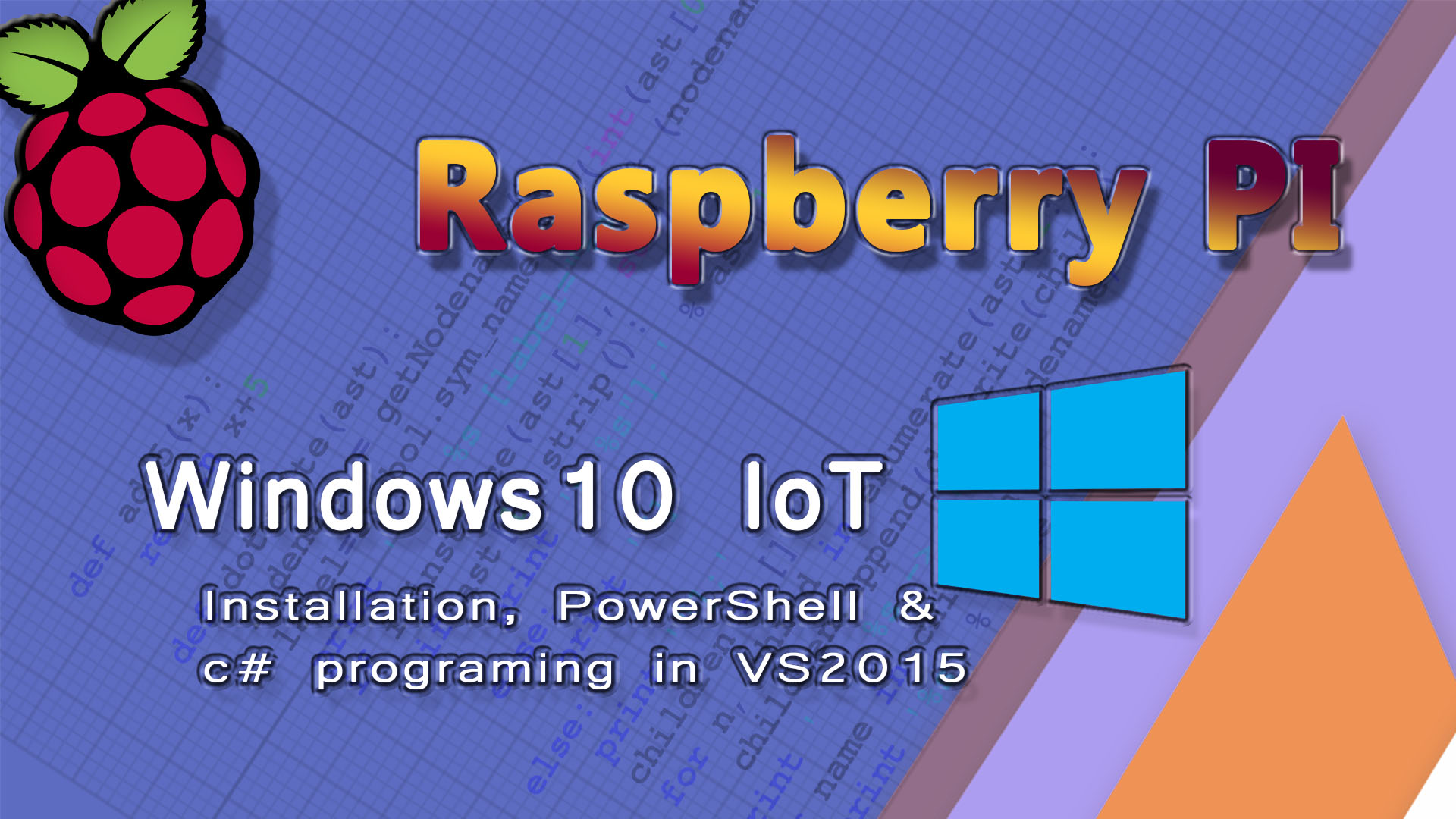The Windows 10 has been making its way to various devices and for some time now it is available on the Raspberry Pi as well. In this tutorial, I will show you how to install, connect, access Windows 10 IoT core, power shell and set up Visual Studio for work with your RPI.
Downloads
You can find the links on the Raspberry Pi download page. Install the IoT dashboard and you will be ready to start. The Dashboard will download the image file and will let you set up the Raspberry Pi with Windows 10. This step is straightforward and all you need is a bit of patience.
Windows 10 IoT core set up

Follow the onscreen instructions to complete the image creation. Once the file is downloaded from the server the same copy can be used to create multiple boot images.
The process takes about 3-5 min depending on your internet and card speeds. Remove the card safely, as doing so will reduce the risk of Windows 10 IoT checking volumes during the boot.
Put the card in when prompted and connect the device preferably via LAN cable, then power on your Raspberry Pi. This is where you need to be patient.
A lot!
On your 1st boot connect the screen to your Raspberry, you will know what is happening and when your device is ready. The device will appear on your My devices list, but you won’t be able to use it straight away. Wait until the Raspberry displays the configuration screen and then connect via the dashboard.
The whole process can take up to 5 min, so be patient.
Windows 10 IoT Core online!
Congratulations! Now we can start things. Right clicking on your devices shows you the Device Home Screen, or access it by entering the IP followed by the port number:8080
xxx.xxx.xxx.xxx:8080 user = administrator; password = your_password;
From the same menu, you can also access the Power Shell. Again, it starts slowly, so prepare to wait about 30 seconds to connect.
Visual Studio 2015

You can download this here. It takes bit of time to download it, so do this ahead to save some waiting. Once done, open a new project and in references add a new reference. Windows IoT Extension for UWP.
This will enable remote execution of the code and access to the GPIO pins library in C#. To run your code on the Raspberry Pi go the top section, and select your remote machine. If your Raspberry is already connected, it should be automatically added to the selection menu.

At this point, you are ready to play!



















